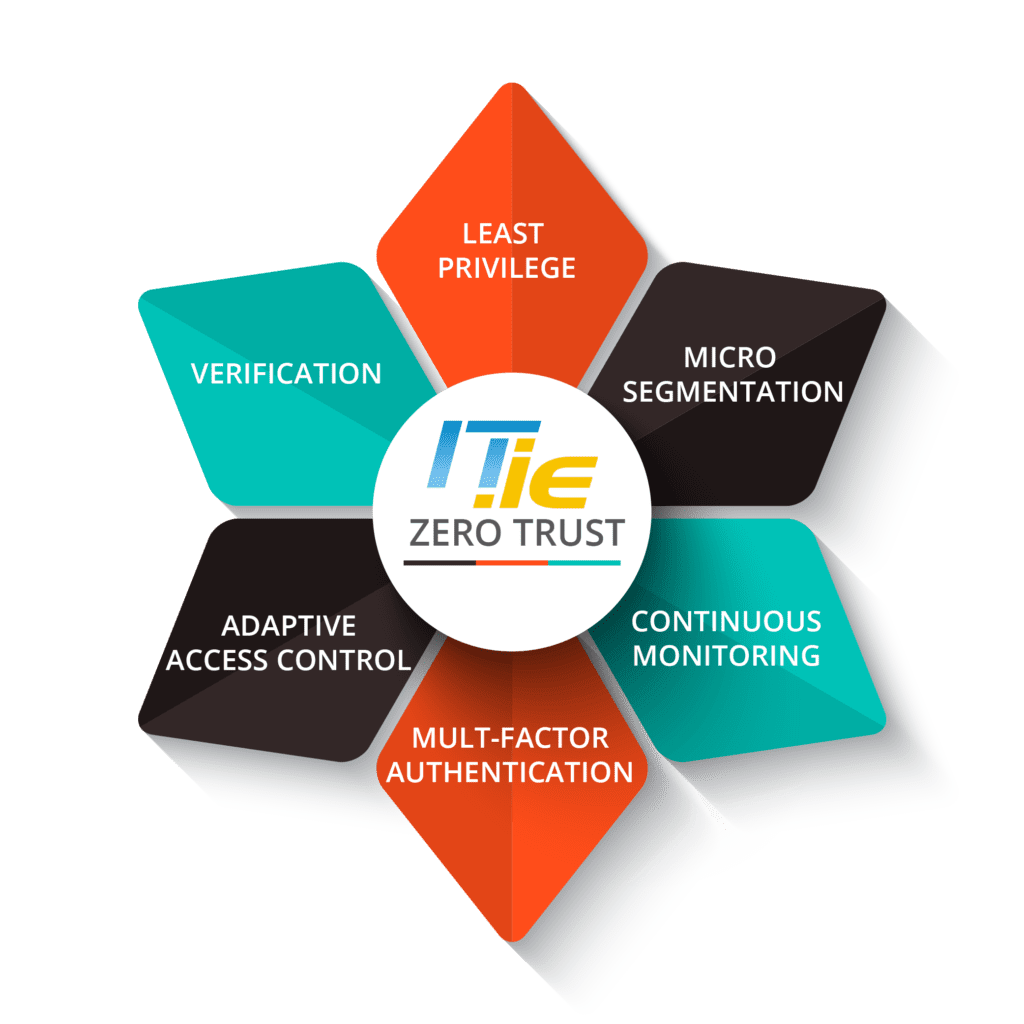
Zero Trust Security is a model of cyber security that challenges traditional perimeter-based security practices. Unlike traditional approaches that assume trust within the network, Zero Trust operates under the principle of “never trust, always verify.” It demands continuous verification of every user, device, and application attempting to access resources, regardless of their location.
In the past, organisations relied on what is referred to as the castle-and-moat approach to security, with a strong perimeter defence protecting the internal network. It has become more and more apparent that with the rise of cloud services, mobile devices, and remote work, the traditional network perimeter has become somewhat porous, leaving organisations vulnerable to sophisticated cyber threats. Zero Trust Security addresses this challenge by implementing a comprehensive security framework that provides granular access controls and continuous monitoring.
At its core, Zero Trust Security shifts the focus from network-centric security to a more user-centric and data-centric approach. It assumes that no user or device, whether inside or outside the network, is automatically trusted. Instead, it treats every access request as potentially malicious and requires strong authentication and verification for each attempt to access resources.
To implement Zero Trust effectively, it is vital that you understand its key principles. Let’s explore some of the fundamental tenets of Zero Trust:
Verification: Zero Trust Security emphasizes continuous verification of user identity, device health, and application integrity. Users and devices are authenticated and authorised at every access request, ensuring only legitimate entities gain access to sensitive resources.
Least Privilege: Zero Trust follows the principle of least privilege, granting users the minimum access privileges necessary to perform their tasks. This approach minimises the potential damage that can be caused by compromised accounts or insider threats.
Micro-Segmentation: Zero Trust Security promotes the segmentation of networks and resources into smaller, isolated segments. This approach limits the lateral movement of threats, preventing them from easily propagating across the network.
Continuous Monitoring: Zero Trust Security relies on continuous monitoring and analysis of user behaviour, network traffic, and application interactions. This allows for real-time threat detection, anomaly detection, and prompt response to potential security incidents.
Adaptive Access Control: Zero Trust Security takes into account contextual information such as user location, device health, and network conditions to dynamically adapt access controls. This ensures that access privileges are tailored to the specific situation and can be adjusted in real-time as conditions change.
Multi-Factor Authentication: Authentication plays a crucial role in Zero Trust. Implementing multi-factor authentication adds an extra layer of security by requiring users to provide multiple credentials or factors to verify their identity. This approach significantly reduces the risk of unauthorised access, even if one factor (e.g., password) is compromised.

With the increasing sophistication of cyber threats, traditional security models have proven to be inadequate. Zero Trust offers several benefits that make it a compelling choice for organisations aiming to enhance their security posture:
By adopting a Zero Trust approach, organisations can significantly improve their security posture. By assuming that every access attempt is potentially malicious, organisations can implement rigorous security controls, continuously monitor network activities, and respond to incidents promptly.
Insider threats pose a significant risk to organisations. Zero Trust helps address this concern by reducing the level of trust granted to both internal and external users. By employing the principle of least privilege access and implementing robust user authentication mechanisms, organisations can mitigate the risks associated with insider threats.
Zero Trust focuses on protecting sensitive data by implementing strict access controls, encrypting data in transit and at rest, and continuously monitoring data activities. This approach ensures that only authorised individuals can access critical information, reducing the risk of data breaches and unauthorised disclosures.
Zero Trust is designed to be adaptable and resilient in the face of evolving cyber threats. With continuous monitoring, risk assessment, and proactive response mechanisms, organisations can stay one step ahead of attackers and quickly adapt their security measures to counter emerging threats.
Implementing the Zero Trust Model can pose significant challenges, especially in relation to its impact on end users. As the model operates under the principle of “never trust, always verify,” users may find it inconvenient and disruptive due to its rigorous authentication processes. Frequent reauthentication and limited access controls can initially result in perceived decreased productivity. This can lead to resistance, often making the adoption of the Zero Trust Model a delicate process that requires careful change management.
However, by educating end users on the importance and workings of the Zero Trust Model, businesses can better align their teams with the new security protocols. Effective training can help users understand why these measures are necessary, enhancing their awareness of potential cyber threats and the role they play in maintaining organisational security. Moreover, a well-informed workforce can also contribute towards detecting and mitigating potential security risks, thereby reinforcing the Zero Trust approach. Hence, while the transition might be challenging, with thorough communication and effective training, businesses can navigate these challenges and successfully implement a Zero Trust framework.
The Zero Trust security model offers a transformative approach to cybersecurity, addressing the limitations of traditional perimeter-based defences in the face of advanced threats. By adopting a “never trust, always verify” stance, organisations can significantly improve their security posture, mitigating insider threats, protecting sensitive data, and adapting to an evolving threat landscape. While implementing Zero Trust can pose initial challenges, these can be managed with effective communication, training, and change management strategies. The future of cybersecurity is here, and it calls for a proactive, flexible, and comprehensive approach that Zero Trust provides.

Stay ahead of the curve with the latest in IT News, Offers, and Cyber Security advisories. Sign up for our mailing list today to keep your digital world secure and informed. Sign up now!